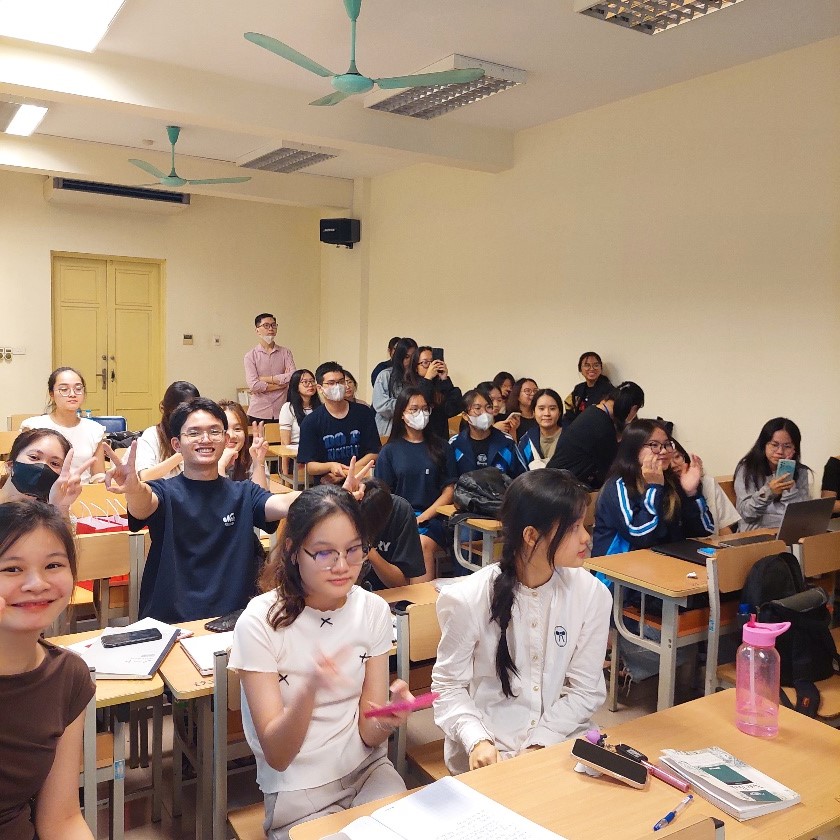
Savonia Article: Experiences of Culturally Sensitive Teaching in Hanoi, Vietnam
This work is licensed under CC BY-SA 4.0
We participated in an international Erasmus+ Credit Staff exchange at Hanoi National University of Education (HNUE) in the fall of 2024. Although the exchange was funded as an Erasmus+ Staff exchange, the partner university emphasized that it should also include lessons. Therefore, we had the opportunity to teach in Faculty of Management.
The teaching was professionally meaningful. The lectures were in English and were translated into Vietnamese in real time. The interpreter was either a professor from the university or one of their students. Collaboration with the interpreter was respectful and natural. We believe that everyone learned something during the lessons.
In our Erasmus+ Credit Staff exchange we paid particular attention to the following aspects:
The behaviour of the students was very polite and respectful. They had excellent manners. At the beginning of the lessons, the students greeted us by saying “Hello, teachers” and thanked us at the end of lessons by saying “Thank you, teacher.” We explained how to say thank you in Finnish, and to our pleasant surprise, the students had learned the Finnish word “kiitos” by the second session, and they thanked us in Finnish.
The lessons was precisely timed and the schedules were strictly followed. For example, in the afternoon lectures, which lasted three hours, there was one 10-minute break. The students did not leave the classroom during the lesson and they stayed until the end.
The students had a very constructive and enthusiastic attitude toward the learning tasks. We had agreed with the professor that we would give the students a task related to our topic. Students were divided in small groups. We noticed that the students accepted the learning tasks, formed groups easily and immediately began to work and started creatively brainstorming their parts.
The output from the learning tasks was good and innovative. These results can be further developed in future collaborations between universities. The students produced their tasks using a wide range of digital tools. The IT skills of the Vietnamese students were excellent! Mobile phones and various digital pedagogical tools are a part of everyday teaching in Vietnam.
We asked feedback from the students via Webropol survey. We received responses from seven students. The feedback was positive, and the students felt that their cultural knowledge and understanding of the Finnish education system had deepened significantly. The students particularly appreciated learning about the pedagogical philosophy of the Finnish education system, lifelong learning and the support for students with special needs. The Vietnamese were also interested in personalized teaching, social work at educational institution and the autonomy of teachers.
In our experience, culturally sensitive teaching takes into account the diverse cultural backgrounds, values, beliefs and experiences of students. The goal is to create a learning environment where all students can feel valued, understood and included. This teaching method promotes equality, respect and an understanding of diversity within the educational community.
We gained a memorable experience in culturally sensitive teaching. We had the opportunity to learn a great deal about Vietnam and its culture, which enriches our professional expertise and understanding of international collaboration.
Authors:
Pirjo Turunen, Principal Lecturer in Social Services, Savonia University of Applied Sciences
Johanna Ripatti, Senior Lecturer in Social Services, Savonia University of Applied Sciences